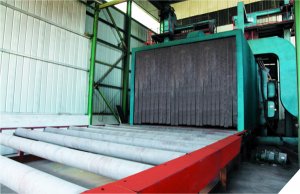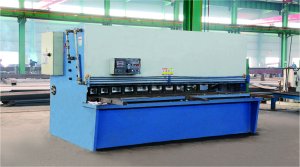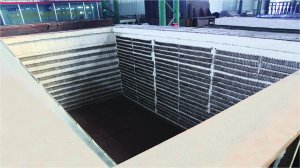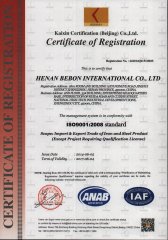As a ferritic stainless steel alloy, the invention of SUS 430 stainless steel was not completed by a single individual or organization, but is part of the history of stainless steel development.
The history of stainless steel can be traced back to the early 20th century. French scientist Professor L.B. Guillet was the first person to study stainless steel from the perspective of metallurgy and mechanics. Among the research results he published in 1904 were some alloys that were ferritic stainless steels, which may have included components related to 430 stainless steel.
Subsequently, the American Dantsizen successfully developed an alloy containing 14% to 16% chromium and 0.07% to 0.15% carbon for lead wires for light bulbs in 1911. This was an early version of ferritic stainless steel 430. The research results published by French Albert M. Portevin in 1911 also included alloys with similar composition to 430 stainless steel, namely alloys containing 17.38% chromium and 0.12% carbon.In the following years, stainless steel production processes and technologies have been continuously improved and optimized. It was not until the 1940s that 430 stainless steel was officially born and began to be widely used in manufacturing and household products. 430 stainless steel has become increasingly popular due to its lower cost, good corrosion resistance, and suitability for many general applications.
To sum up, the invention of SUS 430 stainless steel is the result of the joint efforts of multiple researchers and time. Its development and improvement are a microcosm of the continuous progress of stainless steel technology. For more detailed information about the invention of SUS 430 stainless steel, it is recommended to consult relevant literature or consult materials science experts.
Mechanical properties: The mechanical properties of SUS430 stainless steel are stable and excellent. In the annealed state, its tensile strength is greater than 450MPa, yield strength is greater than 205MPa, and hardness is 183 HBW or 83 HRB. These characteristics make SUS430 stainless steel perform well when withstanding external forces and pressures, making it suitable for a variety of application scenarios.Physical properties: The density of this stainless steel is 7.7 kg/dm³, and the thermal conductivity changes with temperature. For example, the thermal conductivity at 100°C is 26 W/(m·K). In addition, its linear expansion coefficients are 10.5×10⁻⁶/K (100℃) and 11.9×10⁻⁶/K (500℃) respectively. These physical performance parameters enable SUS430 stainless steel to maintain stable performance in different temperature environments.Heat resistance and corrosion resistance: Although SUS430 stainless steel cannot resist oxidation caused by chemicals in the air, it still shows good corrosion resistance at room temperature. However, in environments containing acidic chemicals, oxidation (rusting) may occur, especially after prolonged use.Processing performance: SUS430 stainless steel has good processing performance and can be processed and formed in a variety of ways, such as cutting, welding, stamping, etc. At the same time, some improved SUS430 stainless steel, such as 430LX, further improves the processing performance and welding performance by adding specific elements and reducing the carbon content.
To sum up, SUS430 stainless steel has excellent mechanical properties, stable physical properties, good heat resistance and corrosion resistance, and excellent processing properties. These characteristics make it widely used in many fields, such as kitchenware, utensils and tableware, heater components, home appliances, magnetic applications, etc. It should be noted that the performance of SUS430 stainless steel may be affected by factors such as the specific use environment, processing methods, and alloy composition. Therefore, these factors need to be comprehensively considered in practical applications.

 Address:Zhengzhou city in China.
Address:Zhengzhou city in China. Phone:0086-371-86151827
Phone:0086-371-86151827 Email:
Email:



 Address: Zhengzhou city in China.
Address: Zhengzhou city in China.


